- Try this Sample Quiz
- There are 30 questions to complete in 40 minutes
- You will be given an overall mark at the end of the quiz as well as a mark for each category
- This quiz is a mix of 30 questions taken at random from the 630 reading questions
- Check to see where you went wrong by clicking view questions
Quiz Summary
0 of 30 Questions completed
Questions:
Information
You have already completed the quiz before. Hence you can not start it again.
Quiz is loading…
You must sign in or sign up to start the quiz.
You must first complete the following:
Results
Results
0 of 30 Questions answered correctly
Your time:
Time has elapsed
You have reached 0 of 0 point(s), (0)
Earned Point(s): 0 of 0, (0)
0 Essay(s) Pending (Possible Point(s): 0)
Categories
- grammar 0%
- homophones 0%
- interpretation 0%
- punctuation 0%
- reading tables or maps 0%
- spelling 0%
- suffixes & prefixes 0%
| Pos. | Name | Entered on | Points | Result |
|---|---|---|---|---|
| Table is loading | ||||
| No data available | ||||
- 1
- 2
- 3
- 4
- 5
- 6
- 7
- 8
- 9
- 10
- 11
- 12
- 13
- 14
- 15
- 16
- 17
- 18
- 19
- 20
- 21
- 22
- 23
- 24
- 25
- 26
- 27
- 28
- 29
- 30
- Current
- Review / Skip
- Answered
- Correct
- Incorrect
-
Question 1 of 30
1. Question
Category: spellingSkill: Identifies the correct spelling of words in the correct context.
Which sentence has the underlined word incorrectly spelled?
A. John’s apartment was on the fourth floor.
B. When in a classroom, students need to pay attention.
C. Maria bought a new pair of shoes for the ball.
D. The soldier took one last lingering breth before passing away.
CorrectIncorrect -
Question 2 of 30
2. Question
Category: homophonesSkill: Identify words with similar sounds but different spelling and different meanings (e.g., homophones).
Choose the correct pair of words in the following statement.
The large stationary/stationery stores are inundated at the beginning of the school
year when parents are shopping for materials there/their children might need.
CorrectIncorrect -
Question 3 of 30
3. Question
Category: interpretationSkill: Understands a text that incorporates information presented in pictorial form (e.g., fire hose).
The image below shows instructions on how to operate a fire hose.
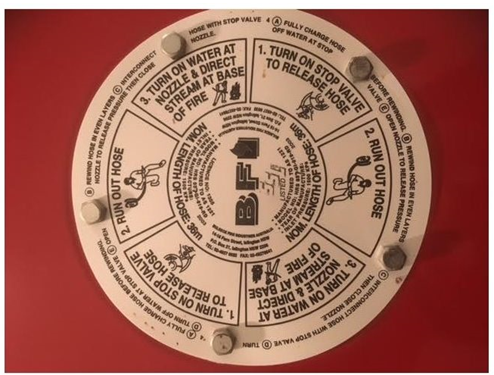
Which of the following must be done before running out the hose?
CorrectIncorrect -
Question 4 of 30
4. Question
Category: interpretationSkill: Recognises and responds to some conventions of unfamiliar texts (e.g., table of contents).
This is the table of contents from a car manual.
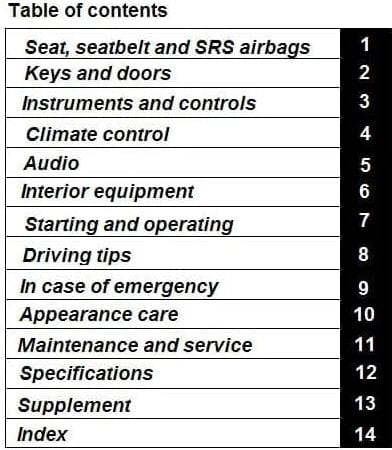
Information regarding the correct cleaning products to use on the vehicle
would more than likely be found on page:
CorrectIncorrect -
Question 5 of 30
5. Question
Category: interpretationSkill: Recognises and responds to some conventions of unfamiliar texts (eg, table of contents).
This is the same text as in the previous question. This question is different.

What would you expect to find in an index?
CorrectIncorrect -
Question 6 of 30
6. Question
Category: interpretationSkill: Understands a text that incorporates information presented in tabular form (e.g., ready reckoners).
Camilla is making a cake that requires six ounces of plain flour.
She doesn’t have a container that measures ounces.
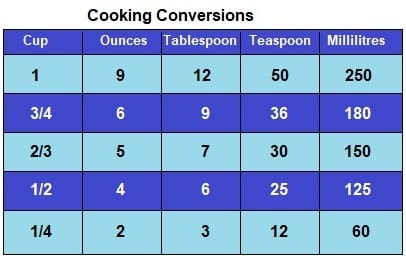
Which of the following is an alternative measurement of 6 ounces?
CorrectIncorrect -
Question 7 of 30
7. Question
Category: interpretationSkill: Comprehends simple, brief texts in highly familiar contexts.
Consult the text below and answer the question that follows.
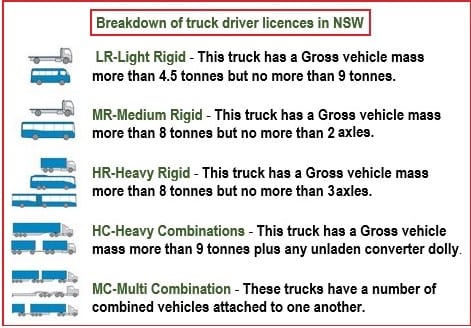
Quentin’s licence permits him to drive trucks and buses with a
Gross Vehicle Mass more than 8 tonnes, and with up to 3 axles.
Which licence does Quentin have?
CorrectIncorrect -
Question 8 of 30
8. Question
Category: interpretationSkill: Comprehends simple, brief texts in highly familiar contexts.
This text is the same as the one just read, but this question is different.
A picture of Sharon’s truck is shown below.
The Gross Vehicle Mass of her truck is 7 tonnes.
What is the MINIMUM truck licence Sharon could have?
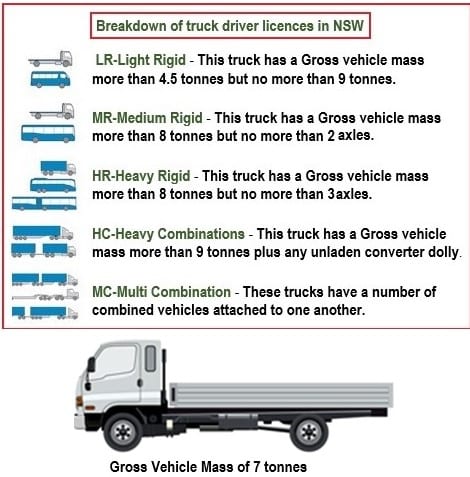 CorrectIncorrect
CorrectIncorrect -
Question 9 of 30
9. Question
Category: interpretationSkill: Comprehends everyday texts and interpret information in detailed written material.
Read the text below and answer the question that follows.
The Good Old Days
‘I got my driver’s licence when I was 17.’ He smiled at the memory, then a wince. ‘I remember, it was the school dance and I was so pleased because my father agreed to let me take his car. It was a 1951 Chevy Oldsmobile, complete with white wall tyres.’ He turned several pages of the photo album, then pointed: ‘See, there? It was Dad’s pride and joy. I felt so little in such a monstrous car’.
‘The night came and I made sure to sound the horn as I approached so that all my mates and their girlfriends could see my triumphant arrival. I was the only one in my group to have a driver’s licence so you can imagine the envy on all their faces!’ He grinned, then as the memory unfolded, rolled his eyes and sighed. ‘I turned into the driveway of a house opposite the hall so that I could show them how skilfully I could reverse back into the street and park’. He began to chuckle as he pointed once more to the faded black and white photo. ‘See there? The front bumper bar curled around the chassis and stuck out a bit. As I carefully reversed, the edge of the bumper bar caught the gatepost of the white picket fence. I didn’t notice because I had my head turned. But everyone else noticed. I heard the cheers and hoots of laughter but still didn’t realise that I was slowly toppling the entire fence.’ Grandpa shook his head ruefully as the embarrassment and shame came flooding back. ‘Never did quite live that one down!’
The story in this text is being told to:
(second last line)
CorrectIncorrect -
Question 10 of 30
10. Question
Category: interpretationSkill: Comprehends everyday texts and interpret information in detailed written material.
This text is the same as the one you have just read. This question is different.
The Good Old Days
‘I got my driver’s licence when I was 17.’ He smiled at the memory, then a wince. ‘I remember, it was the school dance and I was so pleased because my father agreed to let me take his car. It was a 1951 Chevy Oldsmobile, complete with white wall tyres.’ He turned several pages of the photo album, then pointed: ‘See, there? It was Dad’s pride and joy. I felt so little in such a monstrous car’.
‘The night came and I made sure to sound the horn as I approached so that all my mates and their girlfriends could see my triumphant arrival. I was the only one in my group to have a driver’s licence so you can imagine the envy on all their faces!’ He grinned, then as the memory unfolded, rolled his eyes and sighed. ‘I turned into the driveway of a house opposite the hall so that I could show them how skilfully I could reverse back into the street and park’. He began to chuckle as he pointed once more to the faded black and white photo. ‘See there? The front bumper bar curled around the chassis and stuck out a bit. As I carefully reversed, the edge of the bumper bar caught the gatepost of the white picket fence. I didn’t notice because I had my head turned. But everyone else noticed. I heard the cheers and hoots of laughter but still didn’t realise that I was slowly toppling the entire fence.’ Grandpa shook his head ruefully as the embarrassment and shame came flooding back. ‘Never did quite live that one down!’
His friends were envious because
(paragraph 2)
CorrectIncorrect -
Question 11 of 30
11. Question
Category: interpretationSkill: Use strategies to identify the meaning of words and their synonyms.
This text is the same as the one you have just read. This question is different.
The Good Old Days
‘I got my driver’s licence when I was 17.’ He smiled at the memory, then a wince. ‘I remember, it was the school dance and I was so pleased because my father agreed to let me take his car. It was a 1951 Chevy Oldsmobile, complete with white wall tyres.’ He turned several pages of the photo album, then pointed: ‘See, there? It was Dad’s pride and joy. I felt so little in such a monstrous car’.
‘The night came and I made sure to sound the horn as I approached so that all my mates and their girlfriends could see my triumphant arrival. I was the only one in my group to have a driver’s licence so you can imagine the envy on all their faces!’ He grinned, then as the memory unfolded, rolled his eyes and sighed. ‘I turned into the driveway of a house opposite the hall so that I could show them how skilfully I could reverse back into the street and park’. He began to chuckle as he pointed once more to the faded black and white photo. ‘See there? The front bumper bar curled around the chassis and stuck out a bit. As I carefully reversed, the edge of the bumper bar caught the gatepost of the white picket fence. I didn’t notice because I had my head turned. But everyone else noticed. I heard the cheers and hoots of laughter but still didn’t realise that I was slowly toppling the entire fence.’ Grandpa shook his head ruefully as the embarrassment and shame came flooding back. ‘Never did quite live that one down!’
Which of the following have a similar meaning to the word ‘monstrous’?
(paragraph 1)
CorrectIncorrect -
Question 12 of 30
12. Question
Category: interpretationSkill: Identifies the purpose or hidden message of a familiar text style (i.e., fable or proverb).
This text is the same as the one you have just read. This question is different.
The Good Old Days
‘I got my driver’s licence when I was 17.’ He smiled at the memory, then a wince. ‘I remember, it was the school dance and I was so pleased because my father agreed to let me take his car. It was a 1951 Chevy Oldsmobile, complete with white wall tyres.’ He turned several pages of the photo album, then pointed: ‘See, there? It was Dad’s pride and joy. I felt so little in such a monstrous car’.
‘The night came and I made sure to sound the horn as I approached so that all my mates and their girlfriends could see my triumphant arrival. I was the only one in my group to have a driver’s licence so you can imagine the envy on all their faces!’ He grinned, then as the memory unfolded, rolled his eyes and sighed. ‘I turned into the driveway of a house opposite the hall so that I could show them how skilfully I could reverse back into the street and park’. He began to chuckle as he pointed once more to the faded black and white photo. ‘See there? The front bumper bar curled around the chassis and stuck out a bit. As I carefully reversed, the edge of the bumper bar caught the gatepost of the white picket fence. I didn’t notice because I had my head turned. But everyone else noticed. I heard the cheers and hoots of laughter but still didn’t realise that I was slowly toppling the entire fence.’ Grandpa shook his head ruefully as the embarrassment and shame came flooding back. ‘Never did quite live that one down!’
Which proverb best suits this story?
CorrectIncorrect -
Question 13 of 30
13. Question
Category: interpretationSkill: Comprehends everyday texts and interprets information in detailed written material.
Read the text below and answer the question that follows.
Boating Safety and Alert Beacons

Distress beacons are devices that, when activated in a life-threatening situation, assist rescue authorities by providing the approximate location of the incident. Lives are saved each year because responsible skippers carry distress beacons.
EPIRB (Emergency Position Indicating Radio Beacon): An EPIRB designed for marine use will float, keeping the antennae above the water, has a lanyard to secure it to something that’s not going to sink and can operate continuously for 48 hours. An EPIRB should be positioned in the cockpit or near the helm, where it can be reached quickly in an emergency.
Some EPIRBs are available with a built-in GPS. These provide rescuers with the coordinates of the beacon. This dramatically improves location accuracy (to within 150 metres) and the time required for rescuers to locate the device. Non GPS EPIRBs have a location accuracy of approximately 5 kilometres, which may increase the delay until the rescuers find the beacon.
PLB (Personal Locator Beacon): A Personal Locator Beacon (PLB) is a smaller portable beacon designed to be worn or carried by an individual. Some PLBs do not float and may not be intended for use in water, which can be a disadvantage, especially in the event of capsizing craft. A PLB usually has a shorter battery life than an EPIRB and will only operate for approximately 24hrs.
A standard EPIRB has a location accuracy of approximately:
(paragraph 3)
CorrectIncorrect -
Question 14 of 30
14. Question
Category: interpretationSkill: Comprehends everyday texts and interprets information in detailed written material.
Here is the same text. This question is different.
Boating Safety and Alert Beacons

Distress beacons are devices that, when activated in a life-threatening situation, assist rescue authorities by providing the approximate location of the incident. Lives are saved each year because responsible skippers carry distress beacons.
EPIRB (Emergency Position Indicating Radio Beacon): An EPIRB designed for marine use will float, keeping the antennae above the water, has a lanyard to secure it to something that’s not going to sink, and can operate continuously for 48 hours. An EPIRB should be positioned in the cockpit or near the helm, where it can be reached quickly in an emergency.
Some EPIRBs are available with a built-in GPS. These provide rescuers with the coordinates of the beacon. This dramatically improves location accuracy (to within 150 metres) and the time required for rescuers to locate the device. Non GPS EPIRBs have a location accuracy of approximately 5 kilometres, and this may increase the delay until the rescuers find the beacon.
PLB (Personal Locator Beacon): A Personal Locator Beacon (PLB) is a smaller portable beacon designed to be worn or carried by an individual. Some PLBs do not float and may not be intended for use in water, which can be a disadvantage, especially in the event of capsizing craft. A PLB usually has a shorter battery life than an EPIRB and will only operate for approximately 24hrs.
Which of the following is not true about an EPIRB?
CorrectIncorrect -
Question 15 of 30
15. Question
Category: interpretationSkill: Comprehends everyday texts and interprets information in detailed written material.
Here is the same text. This question is different.
Boating Safety and Alert Beacons

Distress beacons are devices that, when activated in a life-threatening situation, assist rescue authorities by providing the approximate location of the incident. Lives are saved each year because responsible skippers carry distress beacons.
EPIRB (Emergency Position Indicating Radio Beacon): An EPIRB designed for marine use will float, keeping the antennae above the water, has a lanyard to secure it to something that’s not going to sink, and can operate continuously for 48 hours. An EPIRB should be positioned in the cockpit or near the helm, where it can be reached quickly in an emergency.
Some EPIRBs are available with a built-in GPS. These provide rescuers with the coordinates of the beacon. This dramatically improves location accuracy (to within 150 metres) and the time required for rescuers to locate the device. Non GPS EPIRBs have a location accuracy of approximately 5 kilometres, and this may increase the delay until the rescuers find the beacon.
PLB (Personal Locator Beacon): A Personal Locator Beacon (PLB) is a smaller portable beacon designed to be worn or carried by an individual. Some PLBs do not float and may not be intended for use in water, which can be a disadvantage, especially in the event of capsizing craft. A PLB usually has a shorter battery life than an EPIRB and will only operate for approximately 24hrs.
What is the most significant disadvantage of a Personal Locator Beacon (PLB)?
(paragraph 4)
CorrectIncorrect -
Question 16 of 30
16. Question
Category: interpretationSkill: Comprehends everyday texts and interprets information in detailed written material.
Here is the same text. This question is different.
Boating Safety and Alert Beacons

Distress beacons are devices that, when activated in a life-threatening situation, assist rescue authorities by providing the approximate location of the incident. Lives are saved each year because responsible skippers carry distress beacons.
EPIRB (Emergency Position Indicating Radio Beacon): An EPIRB designed for marine use will float, keeping the antennae above the water, has a lanyard to secure it to something that’s not going to sink, and can operate continuously for 48 hours. An EPIRB should be positioned in the cockpit or near the helm, where it can be reached quickly in an emergency.
Some EPIRBs are available with a built-in GPS. These provide rescuers with the coordinates of the beacon. This dramatically improves location accuracy (to within 150 metres) and the time required for rescuers to locate the device. Non GPS EPIRBs have a location accuracy of approximately 5 kilometres, and this may increase the delay until the rescuers find the beacon.
PLB (Personal Locator Beacon): A Personal Locator Beacon (PLB) is a smaller portable beacon designed to be worn or carried by an individual. Some PLBs do not float and may not be intended for use in water, which can be a disadvantage, especially in the event of capsizing craft. A PLB usually has a shorter battery life than an EPIRB and will only operate for approximately 24hrs.
Where is the recommended place to store an EPIRB?
(paragraph 2)
CorrectIncorrect -
Question 17 of 30
17. Question
Category: grammarSkill: Uses correct grammar in the construction of sentences.
Which sentence is grammatically correct?
CorrectIncorrect -
Question 18 of 30
18. Question
Category: interpretationSkill: Uses familiar vocabulary and basic punctuation, such as capital letters, commas, and colons as an aid to understanding a text.
What does this sentence need for the intention to be clear?
“My main hobbies are cycling swimming cooking cats and dogs.”
CorrectIncorrect -
Question 19 of 30
19. Question
Category: suffixes & prefixesSkill: Understands prefixes and suffixes.
Which of the following is true about the word unfriendly?
CorrectIncorrect -
Question 20 of 30
20. Question
Category: reading tables or mapsSkill: Recognises and responds to a less familiar text type (e.g. an advertisement).
The advertisement below shows the cost of accommodation at a camping ground.
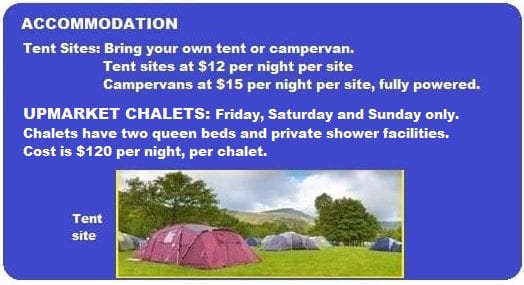
If campers take their campervan to the tent site, what is the cost per night?
CorrectIncorrect -
Question 21 of 30
21. Question
Category: reading tables or mapsSkill: Recognises and responds to a less familiar text type (e.g., an advertisement).
The text is similar to the one in the previous question, but this question is different.

What type of beds do the chalets have?
CorrectIncorrect -
Question 22 of 30
22. Question
Category: punctuationSkill: Understands how the grammatical category of possessives is signalled through apostrophes.
Which word in the sentence below needs an apostrophe to display ownership?
You must realise that those vintage cars of Jacks are worth thousands of dollars.
CorrectIncorrect -
Question 23 of 30
23. Question
Category: interpretationSkill: Interprets information from a familiar text of limited complexity.
Read the text below and answer the question that follows.
The Out-Camp by Christine Hebiton

Sophie lay in her swag, looking up at the myriad of stars in the night sky. She could see the iconic Southern Cross but couldn’t remember how to find due South. The other stars were a glittering mass of light, the pattern of which changed as the night progressed. Years before at school, she remembered being taught about the southern sky but was now unable to recall the information to allow her to make sense of what she was seeing. The night air at the out-camp of Bundarumba Station was crisp and refreshing in contrast to the day’s dry heat. Sophie knew by early morning she would have burrowed deep into her swag to keep warm as the night temperature dropped. For now, she was content to listen to the sounds of the cattle and the murmurs of the people around her. Tomorrow as she had done today, Sophie would be first up just before dawn, lighting the fire to keep the cold at bay and preparing food for the musterers with whom she shared the out-camp. The jackaroos and jillaroos would soon emerge from their swags, silent, tired, cold, hungry, and eager to continue the muster.
One week had passed since she had come to the station, and she often wondered how she had arrived at this place at this particular time in her life. Was it for adventure, or was it an attempt to redefine who she was? An urban girl, a university graduate, thirty years old, who had never ventured more than sixty kilometres into her own country from the city where she was born but had travelled extensively overseas. The invitation from Elizabeth’s brother to experience station life had been irresistible, so here she was for six weeks, sleeping rough with no running water, no flushing toilets, little privacy and ten people she didn’t know. Would she regret leaving her safe and secure life in the city? “Well”, she thought as she drifted to sleep: “Time will tell”.
The main character in this text is:
(paragraph 2)
CorrectIncorrect -
Question 24 of 30
24. Question
Category: interpretationSkill: Interprets information from a familiar text of limited complexity.
This text is the same as the one just read. This text is different.
The Out-Camp by Christine Hebiton

Sophie lay in her swag, looking up at the myriad of stars in the night sky. She could see the iconic Southern Cross but couldn’t remember how to find due South. The other stars were a glittering mass of light, the pattern of which changed as the night progressed. Years before at school, she remembered being taught about the southern sky but was now unable to recall the information to allow her to make sense of what she was seeing. The night air at the out-camp of Bundarumba Station was crisp and refreshing in contrast to the day’s dry heat. Sophie knew by early morning she would have burrowed deep into her swag to keep warm as the night temperature dropped. For now, she was content to listen to the sounds of the cattle and the murmurs of the people around her. Tomorrow as she had done today, Sophie would be first up just before dawn, lighting the fire to keep the cold at bay and preparing food for the musterers with whom she shared the out-camp. The jackaroos and jillaroos would soon emerge from their swags, silent, tired, cold, hungry, and eager to continue the muster.
One week had passed since she had come to the station, and she often wondered how she had arrived at this place at this particular time in her life. Was it for adventure, or was it an attempt to redefine who she was? An urban girl, a university graduate, thirty years old, who had never ventured more than sixty kilometres into her own country from the city where she was born but had travelled extensively overseas. The invitation from Elizabeth’s brother to experience station life had been irresistible, so here she was for six weeks, sleeping rough with no running water, no flushing toilets, little privacy and ten people she didn’t know. Would she regret leaving her safe and secure life in the city? “Well”, she thought as she drifted to sleep: “Time will tell”.
Where has the main character in this text spent most of their life?
(paragraph 2, line 3 and 4)
CorrectIncorrect -
Question 25 of 30
25. Question
Category: interpretationSkill: Interprets information from a familiar text of limited complexity.
This text is the same as the one just read. This text is different.
The Out-Camp by Christine Hebiton

Sophie lay in her swag, looking up at the myriad of stars in the night sky. She could see the iconic Southern Cross but couldn’t remember how to find due South. The other stars were a glittering mass of light, the pattern of which changed as the night progressed. Years before at school, she remembered being taught about the southern sky but was now unable to recall the information to allow her to make sense of what she was seeing. The night air at the out-camp of Bundarumba Station was crisp and refreshing in contrast to the day’s dry heat. Sophie knew by early morning she would have burrowed deep into her swag to keep warm as the night temperature dropped. For now, she was content to listen to the sounds of the cattle and the murmurs of the people around her. Tomorrow as she had done today, Sophie would be first up just before dawn, lighting the fire to keep the cold at bay and preparing food for the musterers with whom she shared the out-camp. The jackaroos and jillaroos would soon emerge from their swags, silent, tired, cold, hungry, and eager to continue the muster.
One week had passed since she had come to the station, and she often wondered how she had arrived at this place at this particular time in her life. Was it for adventure, or was it an attempt to redefine who she was? An urban girl, a university graduate, thirty years old, who had never ventured more than sixty kilometres into her own country from the city where she was born but had travelled extensively overseas. The invitation from Elizabeth’s brother to experience station life had been irresistible, so here she was for six weeks, sleeping rough with no running water, no flushing toilets, little privacy and ten people she didn’t know. Would she regret leaving her safe and secure life in the city? “Well”, she thought as she drifted to sleep: “Time will tell”.
While lying awake the main character was content listening to:
(paragraph 1)
CorrectIncorrect -
Question 26 of 30
26. Question
Category: interpretationSkill: Comprehend everyday texts and interpret the meaning of words in detailed written material.
This text is the same as the one just read. This text is different.
The Out-Camp by Christine Hebiton

Sophie lay in her swag, looking up at the myriad of stars in the night sky. She could see the iconic Southern Cross but couldn’t remember how to find due South. The other stars were a glittering mass of light, the pattern of which changed as the night progressed. Years before at school, she remembered being taught about the southern sky but was now unable to recall the information to allow her to make sense of what she was seeing. The night air at the out-camp of Bundarumba Station was crisp and refreshing in contrast to the day’s dry heat. Sophie knew by early morning she would have burrowed deep into her swag to keep warm as the night temperature dropped. For now, she was content to listen to the sounds of the cattle and the murmurs of the people around her. Tomorrow as she had done today, Sophie would be first up just before dawn, lighting the fire to keep the cold at bay and preparing food for the musterers with whom she shared the out-camp. The jackaroos and jillaroos would soon emerge from their swags, silent, tired, cold, hungry, and eager to continue the muster.
One week had passed since she had come to the station, and she often wondered how she had arrived at this place at this particular time in her life. Was it for adventure, or was it an attempt to redefine who she was? An urban girl, a university graduate, thirty years old, who had never ventured more than sixty kilometres into her own country from the city where she was born but had travelled extensively overseas. The invitation from Elizabeth’s brother to experience station life had been irresistible, so here she was for six weeks, sleeping rough with no running water, no flushing toilets, little privacy and ten people she didn’t know. Would she regret leaving her safe and secure life in the city? “Well”, she thought as she drifted to sleep: “Time will tell”.
What is the meaning of the word ‘myriad’ in this text?
(paragraph 1)
CorrectIncorrect -
Question 27 of 30
27. Question
Category: interpretationSkill: Interprets information from a familiar text of limited complexity.
This text is the same as the one just read. This text is different.
The Out-Camp by Christine Hebiton

Sophie lay in her swag, looking up at the myriad of stars in the night sky. She could see the iconic Southern Cross but couldn’t remember how to find due South. The other stars were a glittering mass of light, the pattern of which changed as the night progressed. Years before at school, she remembered being taught about the southern sky but was now unable to recall the information to allow her to make sense of what she was seeing. The night air at the out-camp of Bundarumba Station was crisp and refreshing in contrast to the day’s dry heat. Sophie knew by early morning she would have burrowed deep into her swag to keep warm as the night temperature dropped. For now, she was content to listen to the sounds of the cattle and the murmurs of the people around her. Tomorrow as she had done today, Sophie would be first up just before dawn, lighting the fire to keep the cold at bay and preparing food for the musterers with whom she shared the out-camp. The jackaroos and jillaroos would soon emerge from their swags, silent, tired, cold, hungry, and eager to continue the muster.
One week had passed since she had come to the station, and she often wondered how she had arrived at this place at this particular time in her life. Was it for adventure, or was it an attempt to redefine who she was? An urban girl, a university graduate, thirty years old, who had never ventured more than sixty kilometres into her own country from the city where she was born but had travelled extensively overseas. The invitation from Elizabeth’s brother to experience station life had been irresistible, so here she was for six weeks, sleeping rough with no running water, no flushing toilets, little privacy and ten people she didn’t know. Would she regret leaving her safe and secure life in the city? “Well”, she thought as she drifted to sleep: “Time will tell”.
Who was in charge of preparing breakfast?
(paragraph 2)
CorrectIncorrect -
Question 28 of 30
28. Question
Category: interpretationSkill: Interprets information from a familiar text of limited complexity.
This text is the same as the one just read. This text is different.
The Out-Camp by Christine Hebiton

Sophie lay in her swag, looking up at the myriad of stars in the night sky. She could see the iconic Southern Cross but couldn’t remember how to find due South. The other stars were a glittering mass of light, the pattern of which changed as the night progressed. Years before at school, she remembered being taught about the southern sky but was now unable to recall the information to allow her to make sense of what she was seeing. The night air at the out-camp of Bundarumba Station was crisp and refreshing in contrast to the day’s dry heat. Sophie knew by early morning she would have burrowed deep into her swag to keep warm as the night temperature dropped. For now, she was content to listen to the sounds of the cattle and the murmurs of the people around her. Tomorrow as she had done today, Sophie would be first up just before dawn, lighting the fire to keep the cold at bay and preparing food for the musterers with whom she shared the out-camp. The jackaroos and jillaroos would soon emerge from their swags, silent, tired, cold, hungry, and eager to continue the muster.
One week had passed since she had come to the station, and she often wondered how she had arrived at this place at this particular time in her life. Was it for adventure, or was it an attempt to redefine who she was? An urban girl, a university graduate, thirty years old, who had never ventured more than sixty kilometres into her own country from the city where she was born but had travelled extensively overseas. The invitation from Elizabeth’s brother to experience station life had been irresistible, so here she was for six weeks, sleeping rough with no running water, no flushing toilets, little privacy, and ten people she didn’t know. Would she regret leaving her safe and secure life in the city? “Well”, she thought as she drifted to sleep: “Time will tell”.
How many more weeks is the main character expected to stay at Bundarumba?
(paragraph 2)
CorrectIncorrect -
Question 29 of 30
29. Question
Category: reading tables or mapsSkill: Understands a text that incorporates information presented in tabular form (e.g., a passport).
The following is an excerpt from a Government Website offering advice on passport applications.
‘Along with your passport application, you must present your full Australian Birth
certificate or Australian citizenship certificate, along with the following documents:
You must present one document each from Category A and Category B‘.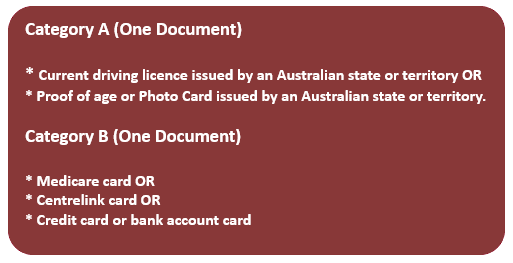
Which of the following choices from A and B will satisfy the requirements?
CorrectIncorrect -
Question 30 of 30
30. Question
Category: reading tables or mapsSkill: Recognise and respond to correct grammar.
Which sentence is grammatically correct?
CorrectIncorrect
